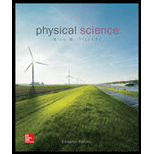
Physical Science
11th Edition
ISBN: 9780077862626
Author: Bill Tillery, Stephanie J. Slater, Timothy F. Slater
Publisher: McGraw-Hill Education
expand_more
expand_more
format_list_bulleted
Textbook Question
Chapter 16, Problem 18AC
The Moon is positioned between Earth and the Sun. This phase is the
a. full moon.
b. new moon.
c. first quarter moon.
d. last quarter moon.
Expert Solution & Answer
Want to see the full answer?
Check out a sample textbook solution
Students have asked these similar questions
describe the phases of the moon?
15. If I notice that the Moon rises at noon on a particular day, what can I conclude about thephase of the Moon?A. third quarter moon
B. new moon
C. full moon
D. first quarter moon
Joe observes how the Moon appears to change over several weeks. He
draws the table below to record his observations.
Which moon phase occurred between his second and third
observations?
A full moon
B waning gibbous
C waxing crescent
D waxing gibbous
Chapter 16 Solutions
Physical Science
Ch. 16 -
l. The plane of Earth’s orbit is called...Ch. 16 -
2. The spinning of a planet on its axis, an...Ch. 16 -
3. The consistent tilt and the orientation of its...Ch. 16 -
4. In the Northern Hemisphere, the North Pole...Ch. 16 -
5. The referent meridian is the
a. prime...Ch. 16 -
6. The parallel at 66.5°S is called the
a. Arctic...Ch. 16 -
7. The movement of the Sun across the celestial...Ch. 16 -
8. Clocks and watches are set to measure a...Ch. 16 -
9. How many standard time zones are...Ch. 16 -
10. The 180° meridian is called the
a. tropic of...
Ch. 16 -
11. The time period from one new moon to the next...Ch. 16 -
12. Maria are
a. craters on the...Ch. 16 -
13. Unmanned missions to the Moon did not find or...Ch. 16 -
14. Rocks on the surface of the Moon are...Ch. 16 - Prob. 15ACCh. 16 -
16. The approximate age of the Moon was...Ch. 16 -
17. What is the accepted theory about the origin...Ch. 16 -
18. The Moon is positioned between Earth and the...Ch. 16 -
19. Tides that occur at the full and new moon...Ch. 16 -
20. Friction between the tides and the ocean...Ch. 16 -
21. Earth is undergoing a combination of how many...Ch. 16 -
22. In the Northern Hemisphere, city A is located...Ch. 16 -
23. Earth as a whole receives the most solar...Ch. 16 -
24. During the course of a year and relative to...Ch. 16 -
25. If you are located at 20°N latitude, when...Ch. 16 -
26. If you are located on the equator (o°...Ch. 16 -
27. If you are located at 40°N latitude, when...Ch. 16 - Prob. 28ACCh. 16 -
29. Evidence that Earth is rotating is provided...Ch. 16 -
30. In about 12,000 years, the star Vega will be...Ch. 16 -
31. The significance of the tropic of Cancer...Ch. 16 -
32. The significance of the Arctic Circle (66.5°N...Ch. 16 -
33. In the time 1 P.M., the P.M. means
a. “past...Ch. 16 -
34. Clock time is based on
a. sundial time.
b. an...Ch. 16 -
35. An apparent solar day is
a. the interval...Ch. 16 -
36. The time as read from a sundial is the same...Ch. 16 -
37. You are traveling west by jet and cross three...Ch. 16 -
38. If it is Sunday when you cross the...Ch. 16 -
39. What has happened to the surface of the Moon...Ch. 16 -
40. If you see a full moon, an astronaut on the...Ch. 16 -
41. A lunar eclipse can occur only during the...Ch. 16 -
42. A total solar eclipse can occur only during...Ch. 16 -
43.A lunar eclipse does not occur every month...Ch. 16 -
44. The smallest range between high and low tides...Ch. 16 -
45. Earth’s axis points toward
a. constellation...Ch. 16 -
46. At the summer solstice, the Sun is
a. low in...Ch. 16 -
47. Earth is positioned between the Sun and the...Ch. 16 -
1. Briefly describe the more conspicuous of...Ch. 16 -
2. Describe some evidences that (a) Earth is...Ch. 16 -
3. Describe how the Foucault pendulum provides...Ch. 16 -
4. Where on Earth are you if you observe the...Ch. 16 -
5. What is the meaning of the word solstice? What...Ch. 16 -
6. What is the meaning of equinox? What causes...Ch. 16 -
7. What is precession?
Ch. 16 -
8. Briefly describe how Earth’s axis is used as a...Ch. 16 -
10. The tropic of Cancer, tropic of Capricorn,...Ch. 16 -
11. What is the meaning of (a) noon, (b) A.M.,...Ch. 16 -
12. Explain why standard time zones were...Ch. 16 -
13. When it is 12 noon in Texas, what time is it...Ch. 16 -
14. Explain why a lunar eclipse is not observed...Ch. 16 -
15. Use a sketch and briefly describe the...Ch. 16 -
16. Using sketches, briefly describe the...Ch. 16 -
17. If you were on the Moon as people on Earth...Ch. 16 -
18. What are the smooth, dark areas that can be...Ch. 16 -
19. What made all the craters that can be...Ch. 16 -
20. What phase is the Moon in if it rises at...Ch. 16 -
21. Why doesn't an eclipse of the Sun occur at...Ch. 16 -
22. Is the length of time required for the Moon...Ch. 16 -
23. What is an annular eclipse? Which is more...Ch. 16 -
24. Does an eclipse of the Sun occur during any...Ch. 16 -
25. Identify the moon phases that occur with (a)...Ch. 16 -
26. What was the basic problem with the Julian...Ch. 16 -
27. What is the source of the dust found on the...Ch. 16 -
28. Describe the four stages in the Moon's...Ch. 16 -
29. Explain why every one on the dark side of...Ch. 16 -
30. Explain why there are two tidal bulges on...Ch. 16 -
1. What is the significance of the special...Ch. 16 - Prob. 2FFACh. 16 - Prob. 3FFACh. 16 - Prob. 4FFACh. 16 - Prob. 5FFACh. 16 - Prob. 6FFACh. 16 - Prob. 1PEBCh. 16 - Prob. 2PEBCh. 16 - Prob. 3PEBCh. 16 - Prob. 4PEBCh. 16 - Prob. 5PEBCh. 16 - Prob. 6PEBCh. 16 -
7. What is the rotational velocity of Edmonton,...Ch. 16 -
8. What is the rotational velocity of Nassau,...Ch. 16 -
9. A satellite at an altitude of 36,000 km is in...Ch. 16 - Prob. 10PEBCh. 16 - Prob. 11PEBCh. 16 -
12. What is the age of a 75–year-old person in...Ch. 16 - Prob. 13PEBCh. 16 - Prob. 14PEBCh. 16 -
15. How far away is the Moon at apogee if a...
Additional Science Textbook Solutions
Find more solutions based on key concepts
60. The solar system is 25,000 light years from the center of our Milky Way galaxy. One light year is the dista...
Physics for Scientists and Engineers: A Strategic Approach with Modern Physics (4th Edition)
8. The formula ΔU = nCvΔT for the change in the internal energy of a fixed amount of an ideal gas is valid
only...
College Physics (10th Edition)
Monochromatic light from a distant point source is incident on two slits. The resulting graph of intensity vers...
Tutorials in Introductory Physics
1. What are the temperatures for freezing water on the Celsius and the Fahrenheit scales, respectively? For boi...
Conceptual Physical Science (6th Edition)
Planetary Priorities. Suppose you were in charge of developing and prioritizing future planetary missions for N...
Essential Cosmic Perspective
Scientific Method.
Glencoe Physics: Principles and Problems, Student Edition
Knowledge Booster
Learn more about
Need a deep-dive on the concept behind this application? Look no further. Learn more about this topic, physics and related others by exploring similar questions and additional content below.Similar questions
- During 1 month, the Moon passes through how many different phases? (17.2) (a) four (b) six (c) eight (d) none of the precedingarrow_forward1) The average distance from the moon to the earth is 385,200 km. Convert this distance to miles by multiplying by 0.6 miles/km. This is the radius of the moon’s orbit.arrow_forwardAstronomy help What does each moon (11-15) identify as? -1st quarter - Full moon -new moon -waxing gibbons -waxing crescentarrow_forward
- What phase would Earth be in if you were on the Moon when the Moon was full? At first quarter? At waning crescent?arrow_forwardIn a lunar eclipse, does the Moon enter the shadow of Earth from the east or west side? Explain.arrow_forwardDistinguish between a solar day and a sidereal day.arrow_forward
- Identify the phases of the Moon if on March 20 the Moon were located at the position the Sun is located on: (a) March 20, (b) September 22, (c) June 22, and (d) December 21.arrow_forwardWhat is the difference between the Moon and a moon?arrow_forwardThe accompanying cartoon shows a crescent moon. Explain why the Moon could never look this way at night. New Yorker collection 2006 Tom Cheney from car toonbank.com All Rights Reservedarrow_forward
- Why isn’t there an eclipse at every new moon and at every full moon?arrow_forwardWhat are the relative positions of the Earth, the Sun, and the Moon during a lunar eclipse? During a solar eclipse?arrow_forwardIn a part of Earth’s orbit where Earth is moving faster than usual around the Sun, would the length of the solar day change? If so, how? Explain.arrow_forward
arrow_back_ios
SEE MORE QUESTIONS
arrow_forward_ios
Recommended textbooks for you
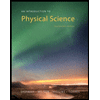 An Introduction to Physical SciencePhysicsISBN:9781305079137Author:James Shipman, Jerry D. Wilson, Charles A. Higgins, Omar TorresPublisher:Cengage Learning
An Introduction to Physical SciencePhysicsISBN:9781305079137Author:James Shipman, Jerry D. Wilson, Charles A. Higgins, Omar TorresPublisher:Cengage Learning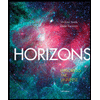 Horizons: Exploring the Universe (MindTap Course ...PhysicsISBN:9781305960961Author:Michael A. Seeds, Dana BackmanPublisher:Cengage Learning
Horizons: Exploring the Universe (MindTap Course ...PhysicsISBN:9781305960961Author:Michael A. Seeds, Dana BackmanPublisher:Cengage Learning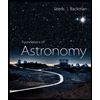 Foundations of Astronomy (MindTap Course List)PhysicsISBN:9781337399920Author:Michael A. Seeds, Dana BackmanPublisher:Cengage Learning
Foundations of Astronomy (MindTap Course List)PhysicsISBN:9781337399920Author:Michael A. Seeds, Dana BackmanPublisher:Cengage Learning Stars and Galaxies (MindTap Course List)PhysicsISBN:9781337399944Author:Michael A. SeedsPublisher:Cengage Learning
Stars and Galaxies (MindTap Course List)PhysicsISBN:9781337399944Author:Michael A. SeedsPublisher:Cengage Learning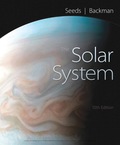
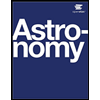 AstronomyPhysicsISBN:9781938168284Author:Andrew Fraknoi; David Morrison; Sidney C. WolffPublisher:OpenStax
AstronomyPhysicsISBN:9781938168284Author:Andrew Fraknoi; David Morrison; Sidney C. WolffPublisher:OpenStax

An Introduction to Physical Science
Physics
ISBN:9781305079137
Author:James Shipman, Jerry D. Wilson, Charles A. Higgins, Omar Torres
Publisher:Cengage Learning

Horizons: Exploring the Universe (MindTap Course ...
Physics
ISBN:9781305960961
Author:Michael A. Seeds, Dana Backman
Publisher:Cengage Learning

Foundations of Astronomy (MindTap Course List)
Physics
ISBN:9781337399920
Author:Michael A. Seeds, Dana Backman
Publisher:Cengage Learning

Stars and Galaxies (MindTap Course List)
Physics
ISBN:9781337399944
Author:Michael A. Seeds
Publisher:Cengage Learning


Astronomy
Physics
ISBN:9781938168284
Author:Andrew Fraknoi; David Morrison; Sidney C. Wolff
Publisher:OpenStax
Time Dilation - Einstein's Theory Of Relativity Explained!; Author: Science ABC;https://www.youtube.com/watch?v=yuD34tEpRFw;License: Standard YouTube License, CC-BY